How can I reuse or recycle broken ironing boards?
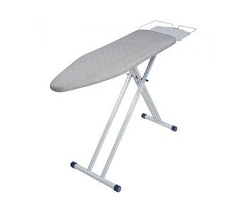 Philip Mitchell Graham has left us another suggestion/excellent upcycle idea:
Philip Mitchell Graham has left us another suggestion/excellent upcycle idea:
Ironing boards. One of the great monuments to inbuilt obsolescence is the common ironing board. They are designed to break after a few years, because the folding mechanism is made of cheap mild steel and the legs often buckle if someone places a heavy load of washing on them.
No matter, use a bit of fencing wire to lock them in an open position, then use them as light work benches in the studio or garden. Sure they are light, but many tasks do not need a heavy table. If you have a few of them, you have in effect a modular bench system that you can reconfigure with no effort. They are light enough to move with one arm which is very useful if like me, you find yourself in need of a bench when you have one arm full.
I suspect our ironing board will outlive us since we use it that rarely (in fact we were utterly shocked to find we had one – we thought it had gone to the furniture charity shop before we moved house). It feels really flimsy though so I suspect if we used any more than once a year, it would fall apart in a shot.
I like Philip’s mobile workbench idea. With a tablecloth over it, it could also be an emergency table for a party or bbq.
Any other suggestions? What about if it can’t be fixed with garden wire – any uses for the metal pipe legs or the board itself?



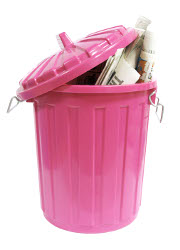 Philip Mitchell Graham has left quite a few comments on the Suggest an item page recently so I guess I should start making my way through his ideas!
Philip Mitchell Graham has left quite a few comments on the Suggest an item page recently so I guess I should start making my way through his ideas!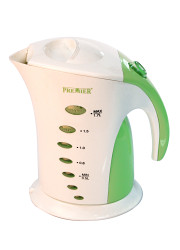 We’ve had an email from Simon:
We’ve had an email from Simon: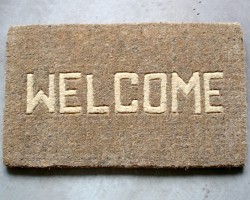 We’ve had an email from Chrissy asking what to do with an old doormat:
We’ve had an email from Chrissy asking what to do with an old doormat: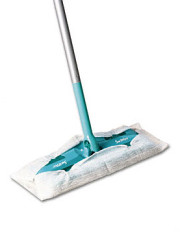 We’ve had an email from Kelly, asking about reusing a “Swiffer” handle:
We’ve had an email from Kelly, asking about reusing a “Swiffer” handle:














